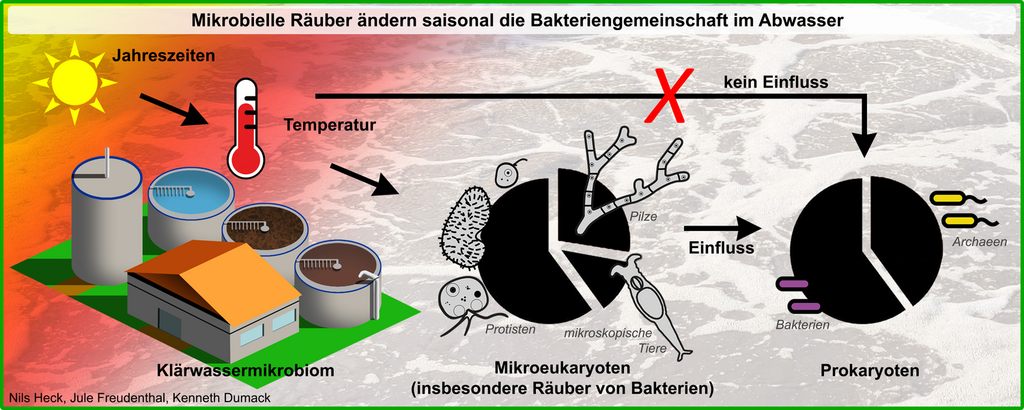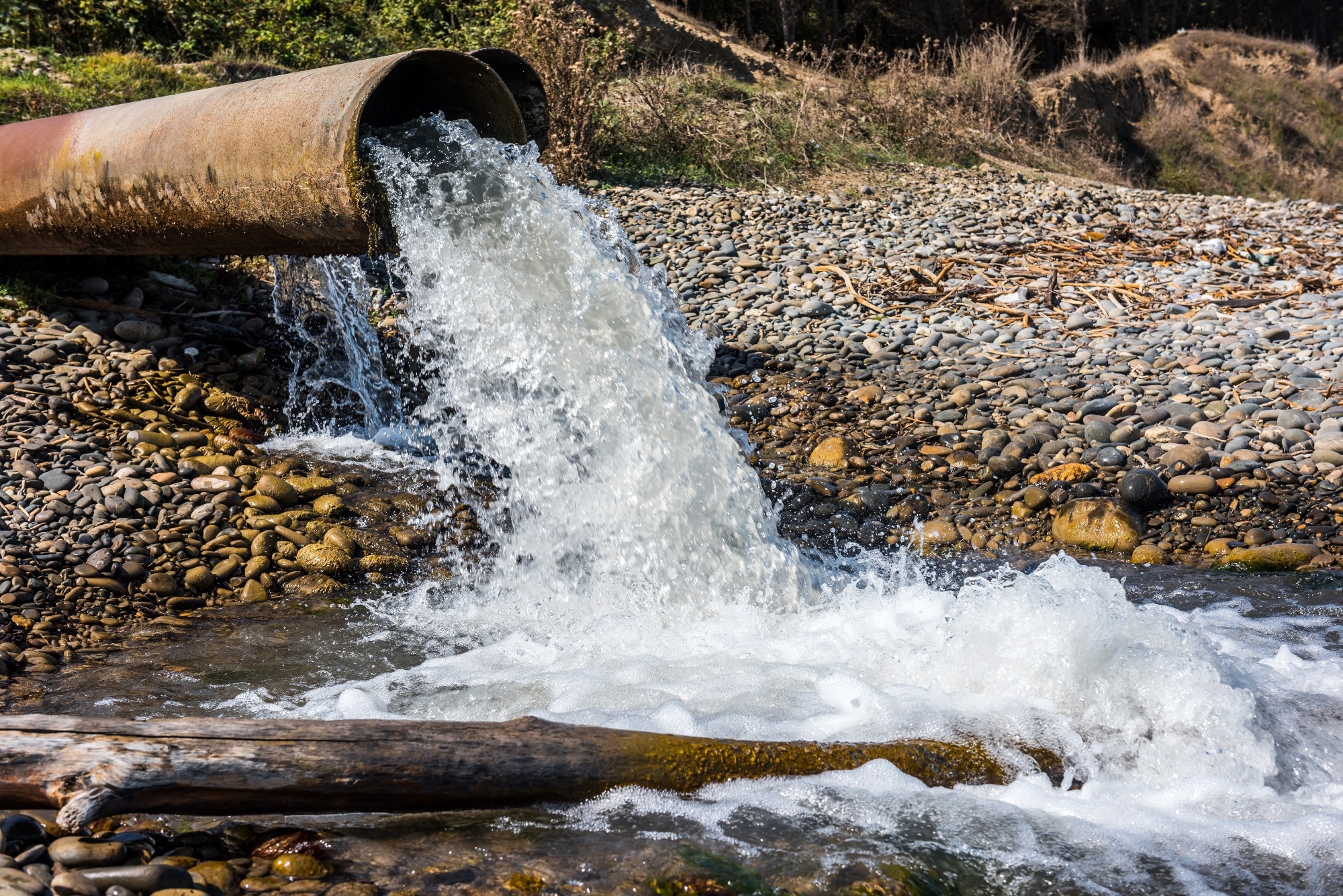Reviewed by Danielle Ellis, B.Sc.Jul 11 2023
The composition of the bacterial community in wastewater is influenced by the community of microbial predators. This describes seasonal variations in the microbial community that impact water treatment efficacy.
 The graphical summary of the above study. The seasons influence the temperature. Temperature does not influence the community of bacteria, but it does influence the community of their predators. Consequently, the community of predators then influences the community of bacteria and presumably the efficiency of water treatment. Image Credit: The University of Cologne.
The graphical summary of the above study. The seasons influence the temperature. Temperature does not influence the community of bacteria, but it does influence the community of their predators. Consequently, the community of predators then influences the community of bacteria and presumably the efficiency of water treatment. Image Credit: The University of Cologne.
Nils Heck and PD Dr Kenneth Dumack of the University of Cologne’s Institute of Zoology carried out the study. The research was published in the journal Water Research.
To successfully treat wastewater, wastewater treatment plants use an accurately coordinated interaction of different microbes. But, most of the microbes associated with water treatment remain unknown.
In addition to the beneficial bacteria responsible for wastewater purification, many of their predators can be seen in bioreactors. However, little is known about whether and how these predators affect wastewater treatment.

Image Credit: Vastram/Shutterstock.com
It has been understood ever since the introduction of wastewater treatment plants that the seasons impact the bacterial community in wastewater and, thus, the efficacy of water treatment. But why is this the case?
Bacteria, after all, lack a built-in sense of time. This is not a trivial question, as seasonal changes are caused by a variety of factors. Temperature and light conditions are undoubtedly the most well-known factors. However, the chemical composition of the wastewater, precipitation amounts, and a variety of other factors change throughout the year.
So, which of these factors influences the bacterial community to change over the seasons?
We found that seasonal variation in ambient temperature cannot explain the variation in the bacterial community. This surprised us, so we looked for another factor that could explain the variation in the bacterial community.”
PD Dr Kenneth Dumack, Study Leader, Institute of Zoology, University of Cologne
Nils Heck, the first author of the study, states, “We found that the community of microbial predators, such as amoebae, ciliates, and also rotifers, can explain the composition of the bacterial community to a certain extent. These predators are in turn dependent on the ambient temperature. Thus, the temperature factor represents an indirect influence on the bacteria through the community of predators.”
The latest discoveries improve the understanding of the so-called “black box” of wastewater treatment to avoid health risks associated with inadequately treated wastewater, among other things.
Source:
Journal reference:
Heck, N., et al. (2023). Microeukaryotic predators shape the wastewater microbiome. Water Research. doi.org/10.1016/j.watres.2023.120293.